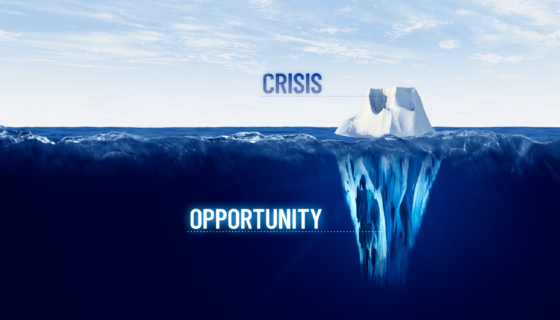Beyond Agile: Why It Pays To Be Anticipatory, Not Reactive

I know full well that people are generally averse to change of any kind. Life would just be simpler if everything that is working stayed the same, and these individuals also tend to abide by the phrase "If it ain't broke, don't fix it."
The problem is that "broke" in that phrase too often implies that a current system that is in place at a business or organization is unshakable solely because it works. Just because something "works" doesn't mean it will work forever, and more often than not, a business leader using agility alone to innovate and operate will wait until a stronger, more efficient system disrupts the organization's process before they take action.
I have written at length about how disruptive change happens from the outside-in if you operate with an agile mindset alone. What I want all business leaders and c-Suite executives to transition to is an Anticipatory mindset where they actually create opportunity for themselves by implementing changes from the inside-out!
Now there are a multitude of ways in which business leaders and employees alike can create an environment for this to happen, all of which are situational to the industry a business is in. But there are three unique thought processes that I have always found effective in facilitating transformation from the inside out, allowing an organization to be the disruptor.
Three Thinking Tips to Create Anticipatory Change From the Inside-Out
1. Establish 'Thinking Time' as Part of Your Operation -- It is hard for many business leaders, managers, and c-Suite executives to put down the crises that come from disruption. The fact of the matter is: There will always be issues you have to resolve at a business or organization, but if you spend all your time putting out fires, thinking that once all those fires are extinguished, then you can focus on future opportunity, that opportunity will just be a new fire set by a competitor.
You must prioritize future opportunities for your organization, and to do so, having designated "thinking time" starts you and your organization off on a solid Anticipatory footing. I have often referred to this as "opportunity hour" as well. It should be an open-minded meeting that fosters an environment of new innovation and outside-the-box thinking about current products and services offered by the organization.
2. Find Future Certainties During Chaos -- This thinking tip is especially important during times of uncertainty, such as the world following the coronavirus pandemic. In the coming year or so, you are going to see agile-only organizations start to lock down, assuming innovation and opportunity must be put on hold to protect and defend the status quo during a potential economic slowdown. But if the status quo can be disrupted during times of prosperity, that means it will most certainly be disrupted during times of uncertainty.
Using my Hard Trend Methodology to identify future certainties makes seizing opportunity and continuing to innovate a more approachable possibility. When you base your innovation and exponential thinking on future certainties that will happen, there is very little risk even during potentially tough economic times. Additionally, identifying Hard Trend future certainties more easily eliminates what won't work and guides you and your team to a more fruitful future more efficiently.
3. Take Anticipatory Action Going Forward -- Yet another classic phrase is applicable here: "Talk is cheap!" During your opportunity hour, after you have identified Hard Trend future certainties and have a clear picture of the problems that those Hard Trends will bring to your organization, it is time to put those ideas into motion. And truth be told, this tip is harder than you realize for many organizations to heed, as even by having low-risk future certainties in hand along with a strong strategic plan, taking the leap can be intimidating.
My advice is to consider a few questions that, when answered, will bring even more certainty to your team. What problems will your customers face in the immediate and long-term future based on these Hard Trends, and what is your plan to solve them with new, innovative products and services? Likewise, if those new products and services are based on your identifiable Hard Trends, what problems will they bring your organization in the process?
Don't Forget That Outside-In Change Still Exists
In my Anticipatory Leader System and Membership, I stress the importance of having both an Anticipatory and agile mindset, rather than one or the other. We live in a Both/And world, after all!
I have often identified a few common events surrounding outside-in change that most organizations see as being out of their control. However, knowing to look for the following occurrences helps you better find a way to get in front of them. These include:
- When a new law is passed
- When a new competitor offers lower prices
- When you experience employee turnover
- When a new technology changes customer behavior
Change from the outside-in will always happen -- this is a future certainty in and of itself. But what anticipation does is put you ahead of this occurrence and gives you the advantage of transforming outside-in change into inside-out opportunity to give your business or organization serious longevity in your industry!









